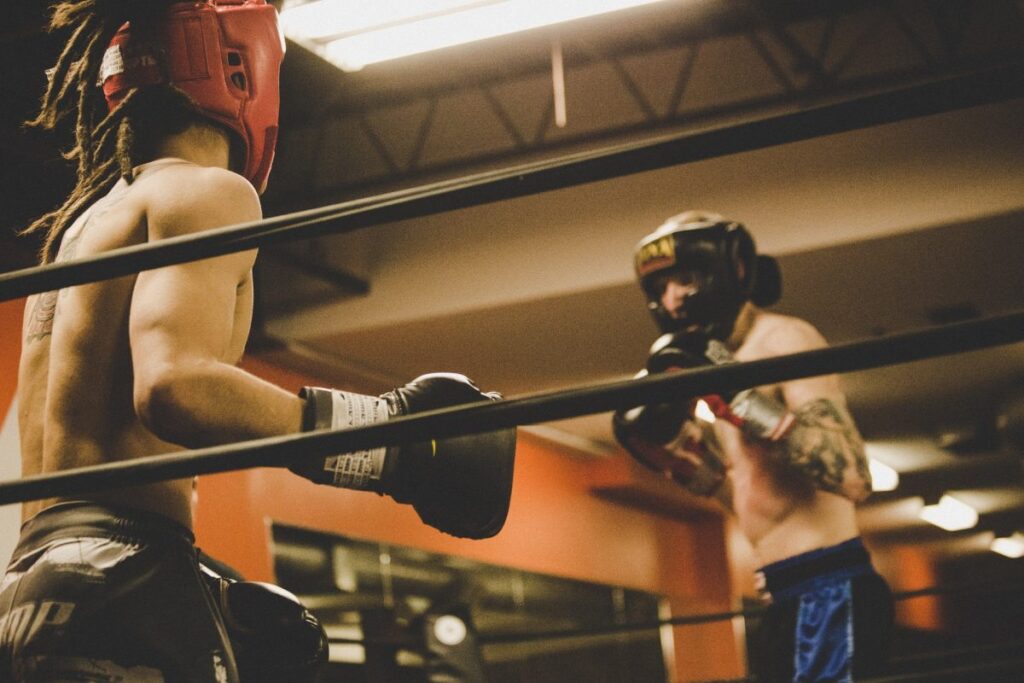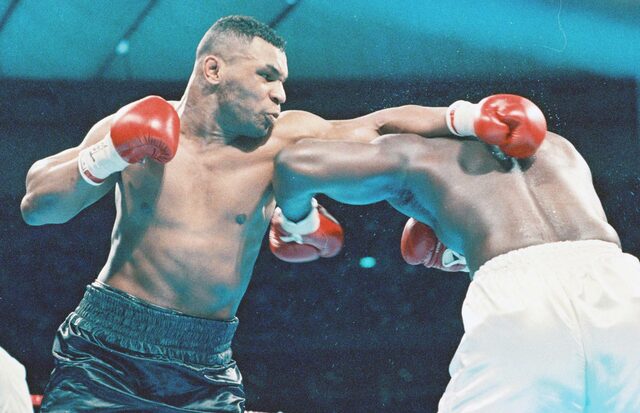
Proper footwear is important for boxing training, but in certain situations you may need to substitute boxing-specific shoes.
In this article, we will explain in detail the types of shoes that can be used as substitutes for boxing shoes, and dig deeper into what functions the shoes have and how to choose them.
You can improve the quality of your training by understanding what kind of footwear is appropriate for maximizing your boxing performance.
目次
Basic understanding of boxing shoe substitutes
Shoes in boxing are more than just footwear.
Therefore, choosing shoes for training and matches is extremely important.
Here, we will explain in detail the unique functions and needs of boxing shoes, as well as the differences between them and general training shoes.
Functions and necessity of boxing shoes
Boxing shoes are specifically designed to help boxers maximize their performance in the ring.
Key features include light weight, ankle support, and a non-slip sole.
These designs allow quick footwork and quick changes of direction, while providing comfort for extended periods of use.
Ankle support is especially important as it reduces the risk of injury and supports stable movement.
The sole also has a strong grip on the floor, helping you maintain balance on slippery rings.
Differences from regular training shoes
There are some notable differences between regular training shoes and boxing shoes.
Training shoes are designed to be versatile and have properties to accommodate a variety of sports activities, such as running or gym training.
Boxing shoes, on the other hand, are specialized for boxing movements and are designed to support footwork agility.
Compared to regular training shoes, boxing shoes are lighter and often have designs that cover the ankle.
This is to securely immobilize the ankle and prevent injury. In addition, the sole is flat and non-slip, and is designed to make sudden stops and changes of direction on the ring smooth.
When using regular training shoes as a substitute for boxing shoes, you need to understand these differences and carefully choose under what conditions you will use them.
When choosing a substitute, it is advisable to choose one with properties that are suitable for boxing movements.
It is important to make choices that do not compromise safety and performance.
How to choose substitute shoes
For boxing training and light sparring, if special boxing shoes are not available, knowledge is required to select suitable shoes as a substitute.
Choosing the right footwear can improve your performance and reduce your risk of injury.
Here, we will explain in detail the necessary functions and selection criteria when choosing substitute shoes, as well as specific examples of shoes that can be substituted.
Necessary functions and selection criteria
The shoes you choose as a replacement should have some basic features that you look for in boxing shoes.
First of all, shoes need to be lightweight. This allows for quick and smooth foot movements.
Next, you need good ankle support. This is to maintain stability and prevent ankle injuries during sudden movements or changes of direction.
Also important is a non-slip sole that provides good grip to the floor. This prevents slipping on the ring and allows for more stable performance.
Examples of shoes that can be substituted
The most commonly recommended alternatives to boxing shoes are cross-training shoes, judo, and wrestling shoes.
These shoes offer lightweight, ankle support similar to boxing shoes, and are designed for multidirectional movement.
Dance sneakers or aerobic shoes may also be good substitutes.
These are very lightweight, provide excellent grip to the floor, and are suitable for long training sessions.
When choosing these shoes, it is important to consider the content and frequency of your training and choose the shoes with the most suitable features.
When choosing shoes, it is also important to make training safety a top priority and check the appropriate size and fit.

How to use running shoes
Running shoes are sometimes considered as a substitute for boxing training due to their convenience and accessibility.
Here, we will explain the benefits of using running shoes for boxing and the precautions to be taken when using them.
Advantages of using running shoes for boxing
The biggest advantage of running shoes is their cushioning and comfort.
It can reduce stress on your feet and delay fatigue even during long training sessions.
Another big advantage is that running shoes are widely available, affordable and easy to obtain.
This allows beginners to learn basic footwork and stances using their own running shoes before purchasing boxing-specific shoes.
Additionally, running shoes generally have excellent breathability, which helps prevent your feet from getting stuffy.
Precautions and proper usage
However, there are some things to keep in mind when using running shoes for boxing training.
Running shoes are designed specifically for forward and backward movements, so they may not be able to handle the quick sideways and diagonal movements that are typical of boxing.
This can put unnecessary stress on your ankles and knees and can also increase your risk of injury.
Therefore, when using running shoes, it is recommended to limit them to basic punching drills and light exercises, rather than training that requires a lot of footwork.
Additionally, if your running shoes have thick soles, it may be difficult to maintain your balance.
Because grip and close contact with the ground are important in boxing, shoes with flat, thin soles are preferred.
When choosing which running shoes to use, it is important to choose models with thin soles, flexibility, and lateral stability whenever possible.
If you are using running shoes as a substitute for boxing, you should pay attention to these points and strive to choose and use shoes appropriately.

Training with cross-training shoes
Cross-training shoes are gaining attention as an option for boxing training due to their versatility.
In this section, we will explain in detail the characteristics of cross-training shoes and their application to boxing.
Features of cross training shoes
Cross-training shoes are designed for different types of exercise, and their versatility is their greatest feature.
These shoes usually have good support, stability, and a good amount of cushioning.
In particular, it is designed to support lateral movement, making it suitable for sports that require quick direction changes and foot movements, such as boxing.
Another big advantage of cross-training shoes is that they are durable and strong enough to withstand a variety of training sessions.
Application example to boxing
When applying cross-training shoes to boxing training, they are especially suitable for footwork and light sparring sessions.
For example, wearing cross-training shoes during shadow boxing or pad work can reduce stress on your feet while providing the necessary ground grip.
Also, for light sparring, the stability provided by these shoes provides additional ankle support and protection during sudden movements and evasive maneuvers.
However, for serious sparring or intensive pre-fight training, boxing-specific shoes are more appropriate.
Cross-training shoes are not fully optimized for the fine movements and unique demands of the ring as specialized boxing shoes, so they have limitations when it comes to highly technical training.
When applying cross-training shoes to boxing, it is important to understand their characteristics and apply them to appropriate training.
Choosing the right shoes is the key to effective training and injury prevention, so you need to be careful when choosing them.

Risks to avoid when choosing shoes
Choosing the right shoes is very important for boxing and other training activities.
Choosing the wrong footwear can not only lead to poor performance, but also serious injuries.
Here we provide a checklist of risks to avoid when choosing shoes and a checklist for safe training.
Disadvantages of choosing the wrong shoes
The most common problem caused by choosing the wrong shoes is foot and ankle injuries.
Inadequate support or lack of cushioning increases risk, especially in sports that involve intense footwork like boxing.
For example, shoes without proper grip can make you slippery, which can lead to falls and sprains.
Soles that are too hard or too soft can also prevent proper ground feedback and impair balance.
Checklist for safe training
-
Proper fit : Shoes should fit snugly, especially at the heel. Avoid unnecessary stress on your feet and ankles by preventing your feet from moving within the shoe.
-
Adequate support : Ankle support is especially important. Especially in boxing, where there are many sudden changes in direction, you should choose shoes that firmly support your ankles.
-
Sole characteristics : The sole of your shoe should match your training environment. Ideally, it should be non-slip and have adequate cushioning.
-
Breathability : During long training sessions, it is important to choose shoes with good ventilation to prevent your feet from getting stuffy.
-
Durability : Since you will be using your shoes frequently, choosing durable shoes will ensure long-term and safe use.
By paying attention to these checkpoints when choosing shoes, you can increase the effectiveness of your training and minimize the risk of injury.
Choosing the right shoes is essential for safe and effective training.

Choosing shoes to enhance training effectiveness
Choosing the right shoes is very important for improving training performance and preventing injuries.
In this section, we will explain in detail the criteria for choosing effective training shoes and how to choose shoes that suit your practice.
Requirements for effective training shoes
It is important to choose effective training shoes that meet the following criteria:
- Support : Shoes should provide adequate support for your feet and ankles. Ankle support is especially important to prevent injuries during strenuous exercise or changes of direction.
- Cushioning : Proper cushioning absorbs the shock of landing and reduces stress on joints. However, too much cushioning impairs stability, so balance is key.
- Durability : It’s best to choose shoes made from durable materials to withstand high-intensity training.
- Proper fit : Shoes need to fit snugly around your foot, and it’s important that your foot stays securely in place so it doesn’t move around inside the shoe.
How to choose shoes that suit your practice
The characteristics of shoes required differ depending on the training content. for example:
- Running : If you’re going to be running long distances, choose running shoes with good shock absorption. Lighter, more responsive shoes are better for short distances and sprints.
- Weight training : For weightlifting and weight training, it is recommended to choose shoes with thin soles and stiff soles that provide a stable contact with the ground.
- Cross-training : For cross-training and functional fitness, shoes that are flexible and supportive to support lateral movement are ideal.
By understanding the purpose and characteristics of each training session and choosing the most suitable shoes, you can maximize the effectiveness of your training and minimize the risk of injury.
Choosing shoes based not only on fit but also on the type of training will lead to more effective results.

Voices of boxers who have actually tried using substitute shoes
When training for boxing, some athletes use substitute shoes when special shoes are not available.
Here, we will take a deep dive into the advice and experiences of boxers who have actually trained using substitute shoes, based on their experiences.
Advice from those with training experience
Many experts recommend cross-training shoes or running shoes as an alternative to boxing shoes, but there are several points to keep in mind when choosing.
Firstly, many people agree that shoes should be selected according to the type of training.
Especially for boxing training, which involves a lot of foot movement, shoes with strong ankle support and grip on the bottom are recommended.
She also advises that when choosing a replacement shoe, it’s important to check how it fits and feels comfortable on your feet, and that a short trial run before training can be helpful.
Actual experience of using substitute shoes
We have received a variety of feedback from boxers who have used substitute shoes.
Some boxers have found the running shoes to be highly cushioned and comfortable, while others feel that they are a bit unsuitable for the specific movements of boxing.
Some say the soles of running shoes are too flexible and unstable, especially in drills that involve a lot of lateral movement, sudden stops, and changes of direction.
Boxers who have used cross-training shoes have had relatively positive feedback, praising their versatility, but some say they are not suitable for serious sparring.
These experiences are a valuable resource for boxers considering shoe replacements.
You should keep in mind that choosing shoes that suit your training needs will lead to effective training and injury prevention.



